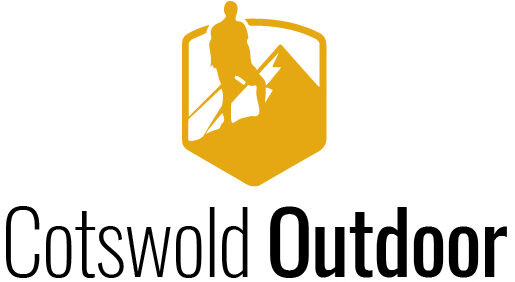The Alpha series, particularly the SV, is renowned for its strength, weather resistance, durability, and toughness. The Beta line is more versatile and lighter, which makes it an attractive option for anyone looking for a jacket that can be used for all purposes at a low price. The Beta AR shines in this instance.
What’s in a Name?
Arc’teryx has a unique naming system that allows it to identify its products. This will enable buyers to quickly identify each model’s exact utility in their outerwear collection.
The SV product modifier stands for Se Vere Temperature. It’s made with Arc’teryx’s most robust and durable materials. This allows it to withstand prolonged exposure in harsh environments. The AR product modifier stands for All Round. This means you still get high-performance, weather-resistant products, but the focus is now on versatility for various activities.
THE ALPHA OVERVIEW
The Arc’teryx naming guide states that the Alpha product line was designed for alpine activities and climbing. You can expect high performance in even the most challenging environments. All this comes at a higher cost. Let’s compare the Alpha line’s AR and SV variants.
THE BETA OVERVIEW
The Beta series was designed to be versatile enough to work in various situations and activities. The Beta series is more suited for jack-of-all-trades types. The Beta, like the Alpha, is built to withstand harsh climates but not as hard as the Alpha.
Weather-Resistance
The Alpha SV and Alpha AR are made from a plain weave. The Beta AR uses a ripstop weave. Each has its advantages. Because of its smooth surface, the former is more flexible and can absorb water better. This adds an extra layer of tear resistance to the jacket, increasing its durability.
All four models are treated with a water-repellent finish in addition to the three layers of weather-resistant Gore-Tex Pro. All three models, Beta SV and Beta AR have a DWR coating. The Alpha AR uses Arc’teryx Nu water Repellent treatment.
Breathability
All four models include Pro, a more breathable version of GORETEX.
The Alpha SV features a breathable face fabric that is 100Dnylon Plain weave. It is backed with three layers of GORETEX Pro. The Alpha AR also has 3L GORETEX Pro backing but has a less robust 40Dface. The reinforced areas of high friction are supported by 80D plain weaving. The AR will be lighter than the SV and more breathable but less durable and weather-resistant.
The Beta SV is somewhere in between Alpha SV and Alpha AR. It’s made with N80pX 3L GORETEX Pro and an 80Dplain weave. The Beta AR, on the other hand, is made primarily with an N40r X GORE-TEX Pro 3L. It features a 40D ripstop weft and an 80D plain weaving in high-friction zones.
Fit
Arc’teryx uses e3D patterning for highly mobile jackets that allow users to move freely when needed. You won’t feel restricted while skiing down or climbing up.
All four models are regular fit. However, the Beta series is slightly larger, making it an ideal choice for layering. All models are at the hip and have Velcro sleeves. The hem, neck, and hood are catchable with drawstrings that can be adjusted to make it snugger.
Hood
The Alpha SV and Alpha AR all have a storm hood. While the Beta AR has a drop hood. Both types of hoods are helmet-compatible and have adjustable pulleys at the collar and behind it. The only difference between StormHood and DropHood is the shorter collar.
Although the StormHood collar is higher, it offers more protection from foul weather. However, the DropHood can be worn alone and is more comfortable. Because the DropHood is so snug, insulation mid-layers will not nest underneath it as well.
Pockets
You want to distinguish between an Alpha jacket and a Beta jacket quickly. Take a look at the pockets. The pockets in the Alphas are more prominent, while those on the Betas are more traditional and are found along the ribs.
The Alpha AR and Beta AR both have three pockets. Two zip pockets are outside, and one is inside a security pocket. These same pockets are also available on Alpha SV, Beta SV, and Beta SV.
The Alpha SV or Beta SV are better storage options than their AR counterparts if you tend to carry a lot of stuff.
Zippers
All Alpha and Beta zippers have WaterTight sliders that are Rain Shield (RS). This ensures a water-resistant seal. This is true for all front zips and pocket zips. Pit-zips are a standard feature across all four models and are a great way to improve ventilation.
Pricing
The Alpha SV is the most expensive, at $785.00 (900.00 CAD). The Beta SV is available for $649.00 (800.00 CAD). $575.00 (750.00 CAD), while $575.00 is available for purchase (700 CAD).
You can often find previous year’s models and colors at a discount price because Arc’teryx releases new jackets every year. For incredible deals, check out the Arc’teryx jacket section.
Stand out features
CHEST POCKET
The Alpha line’s chest pockets are slightly higher than the Beta line’s and are closer to the midline. Climbers can access their pockets without being restricted while wearing a harness. This is also helpful for backpack hip belts.
One drawback to Alpha pockets is that they can only be accessed by crossbody access. This is in contrast to the convenient same-side access available on Beta models.
DROP TAIL HEM
All four models run hip-length. However, there are some differences between them. The Alpha SV and AR are 30.75″ (78cm). The Beta AR is 29.7cm (55.5 cm).
These measurements are taken at the longest point in the middle-back. All jackets have a drop tail edge hem, adding an additional inch to the back. This keeps drafts out and your butts dry.




